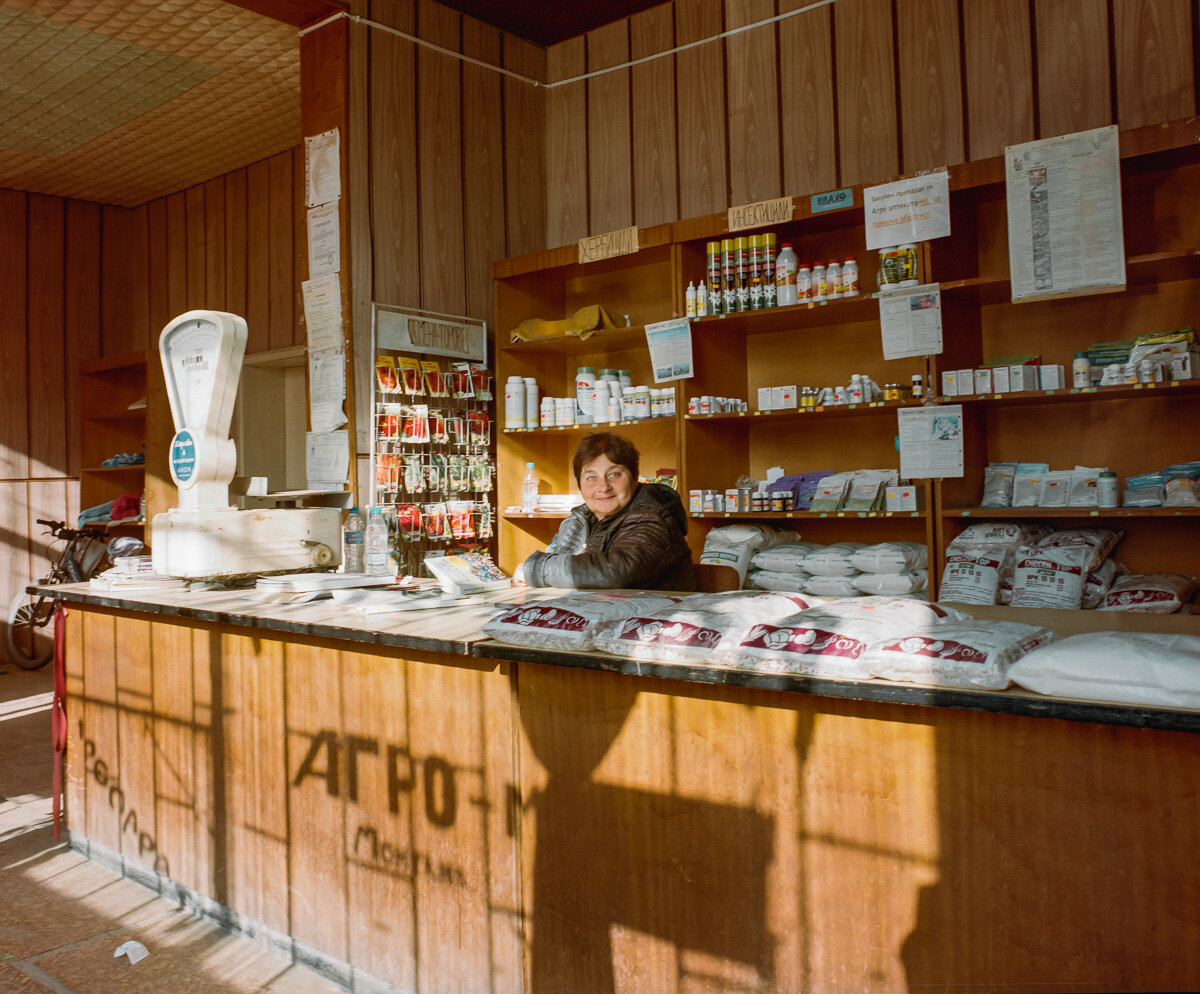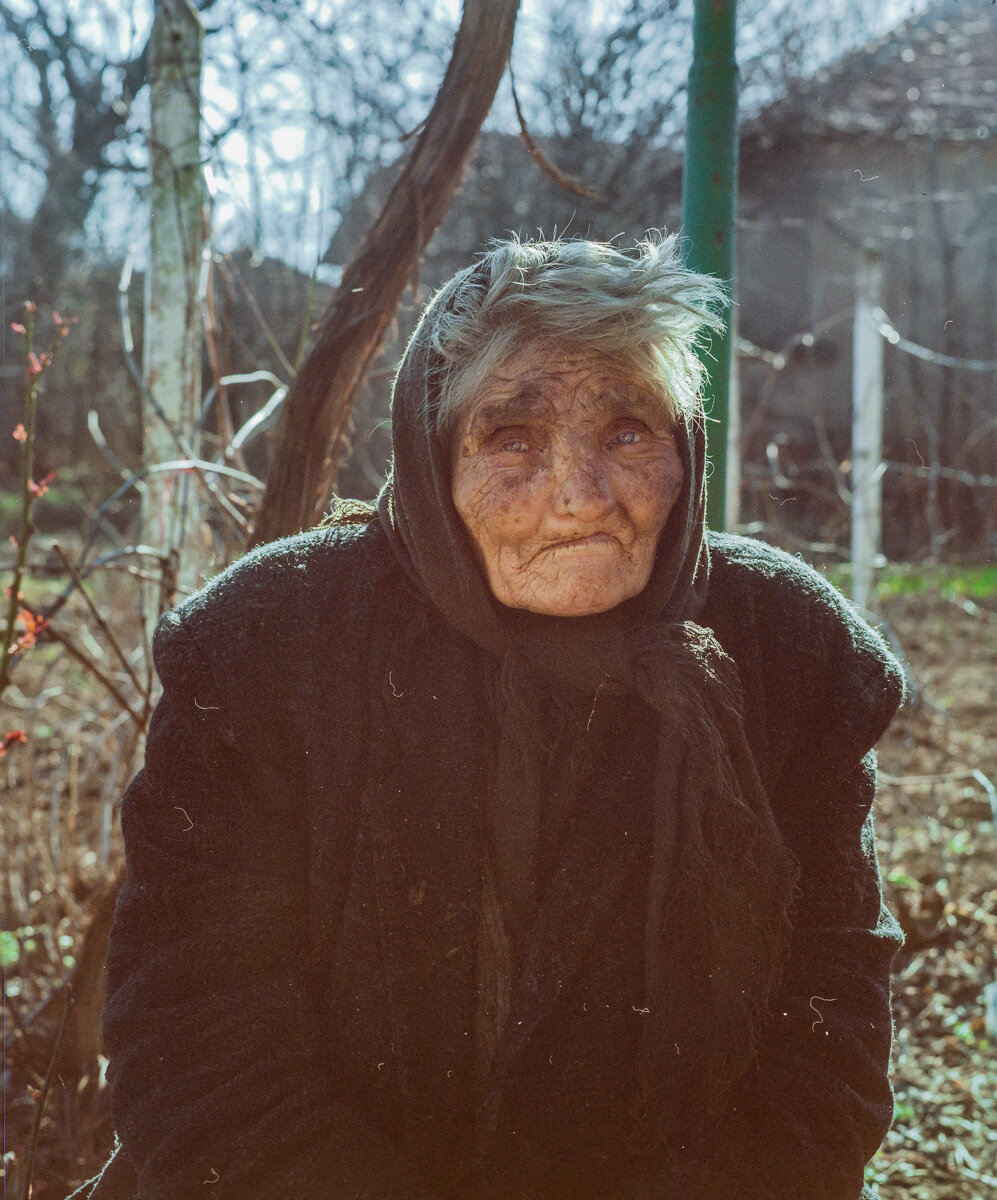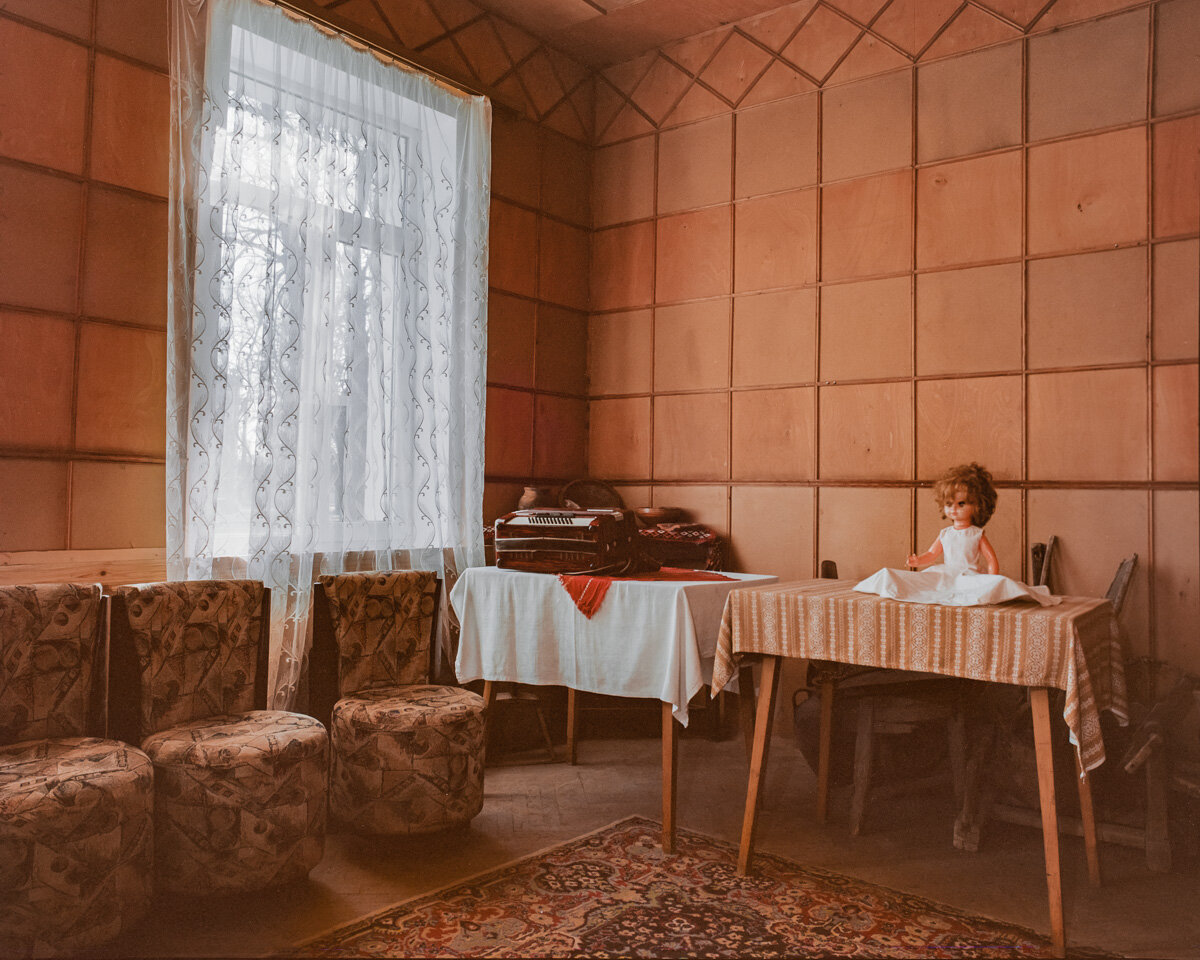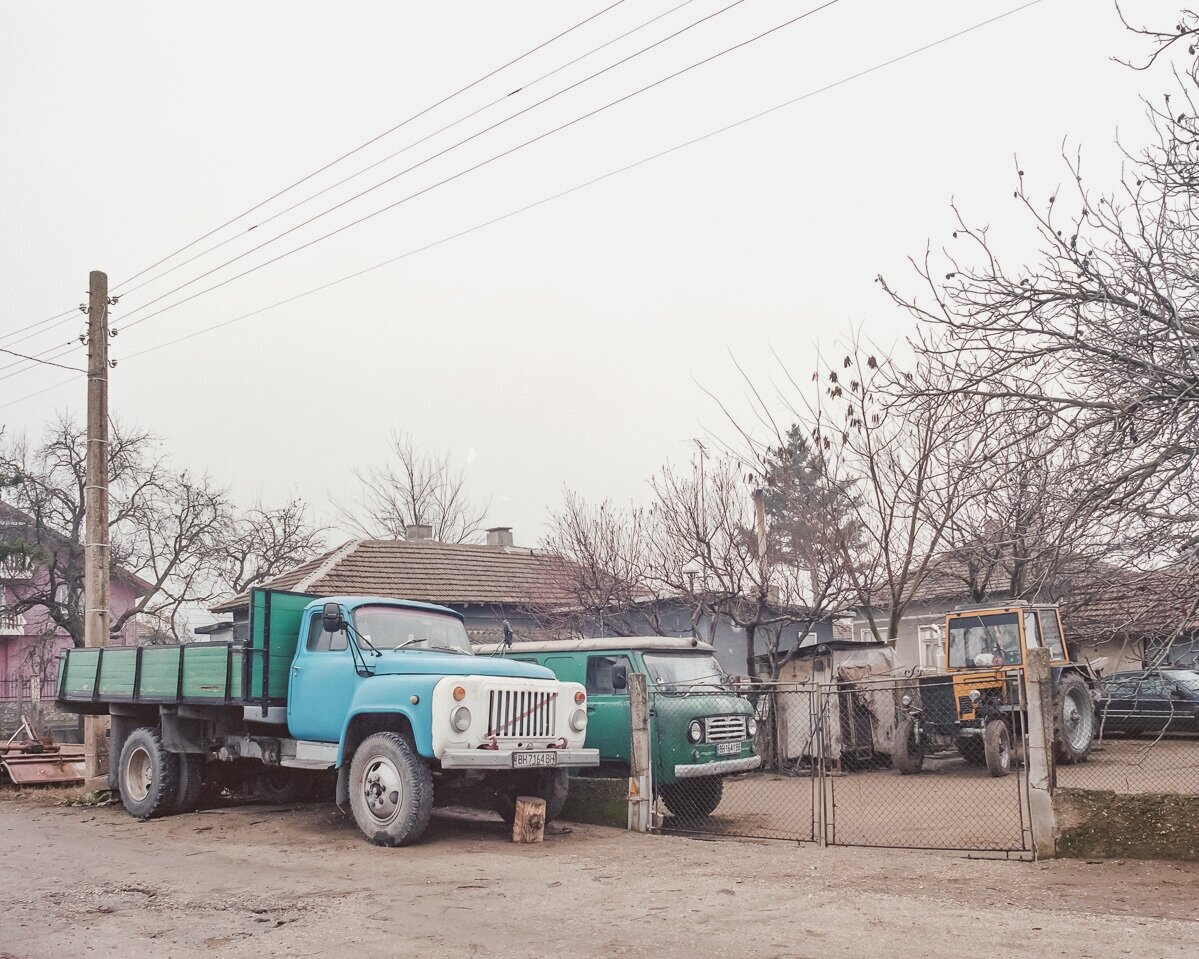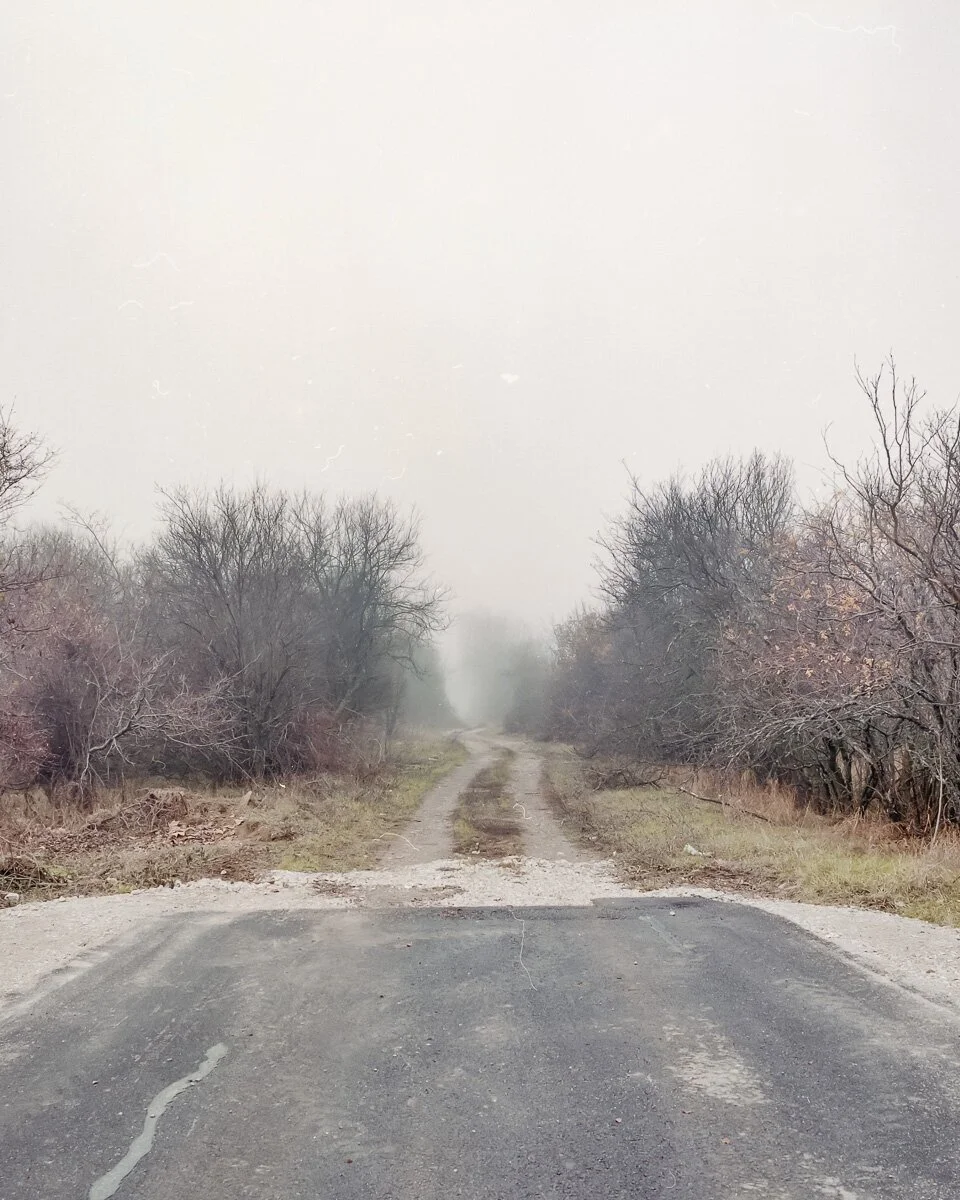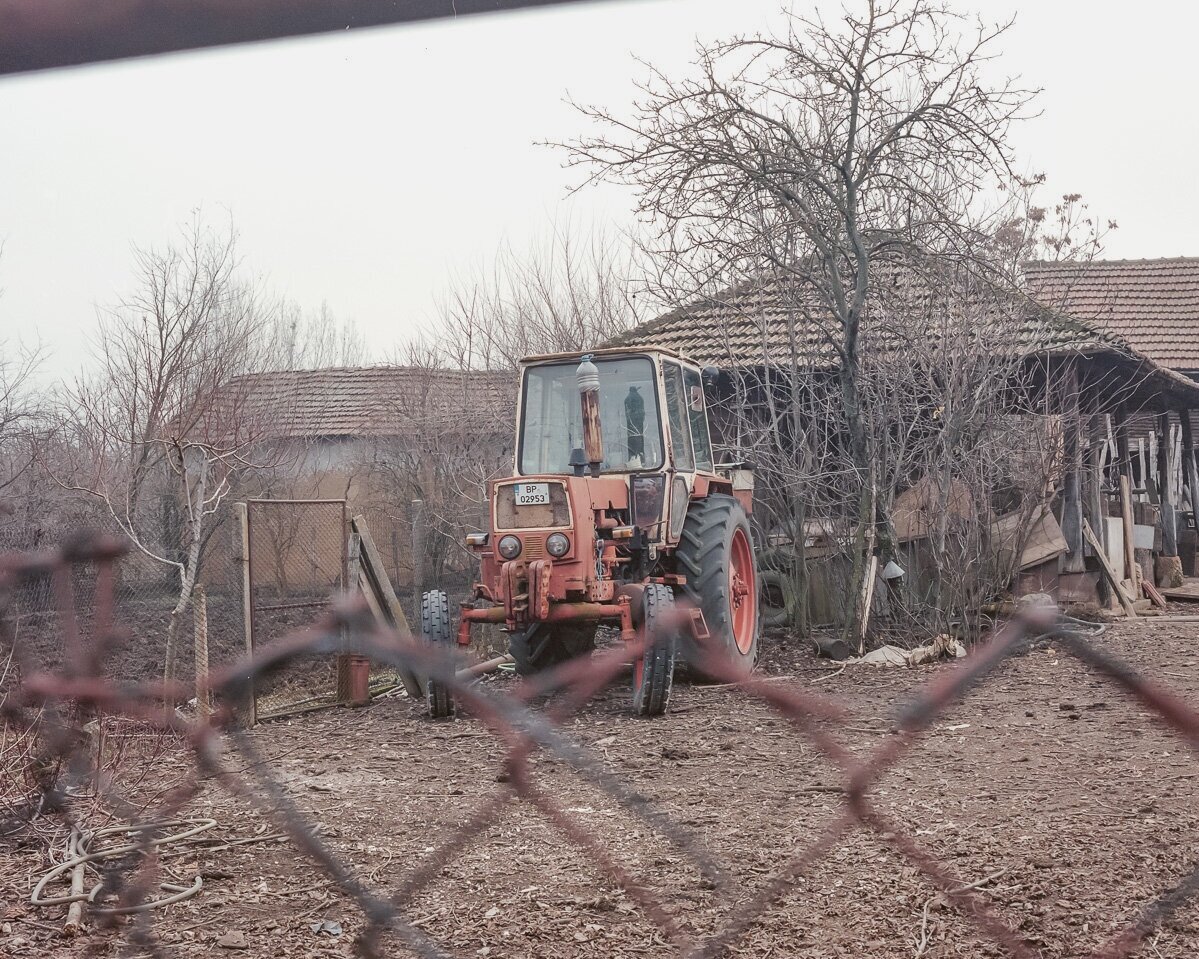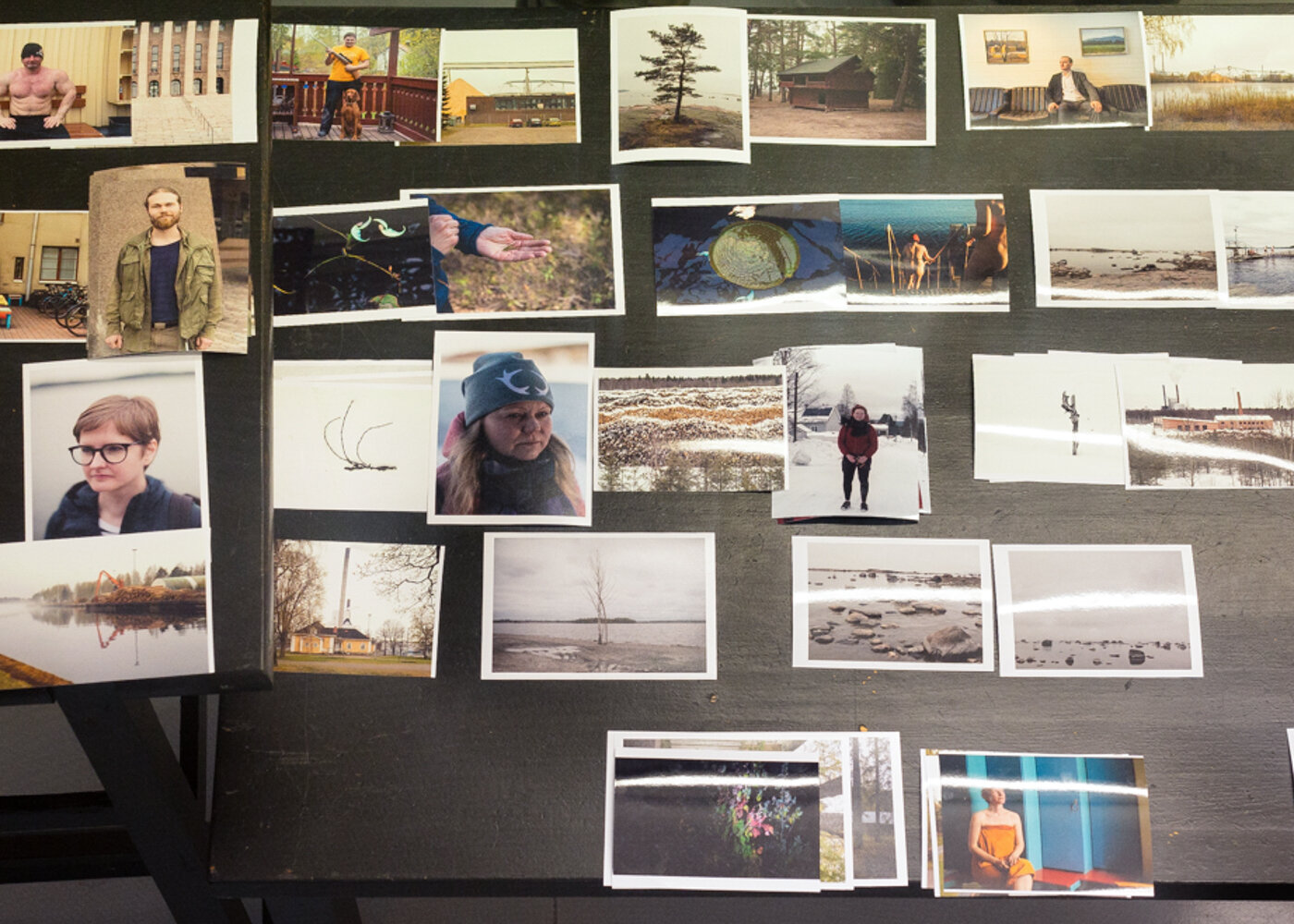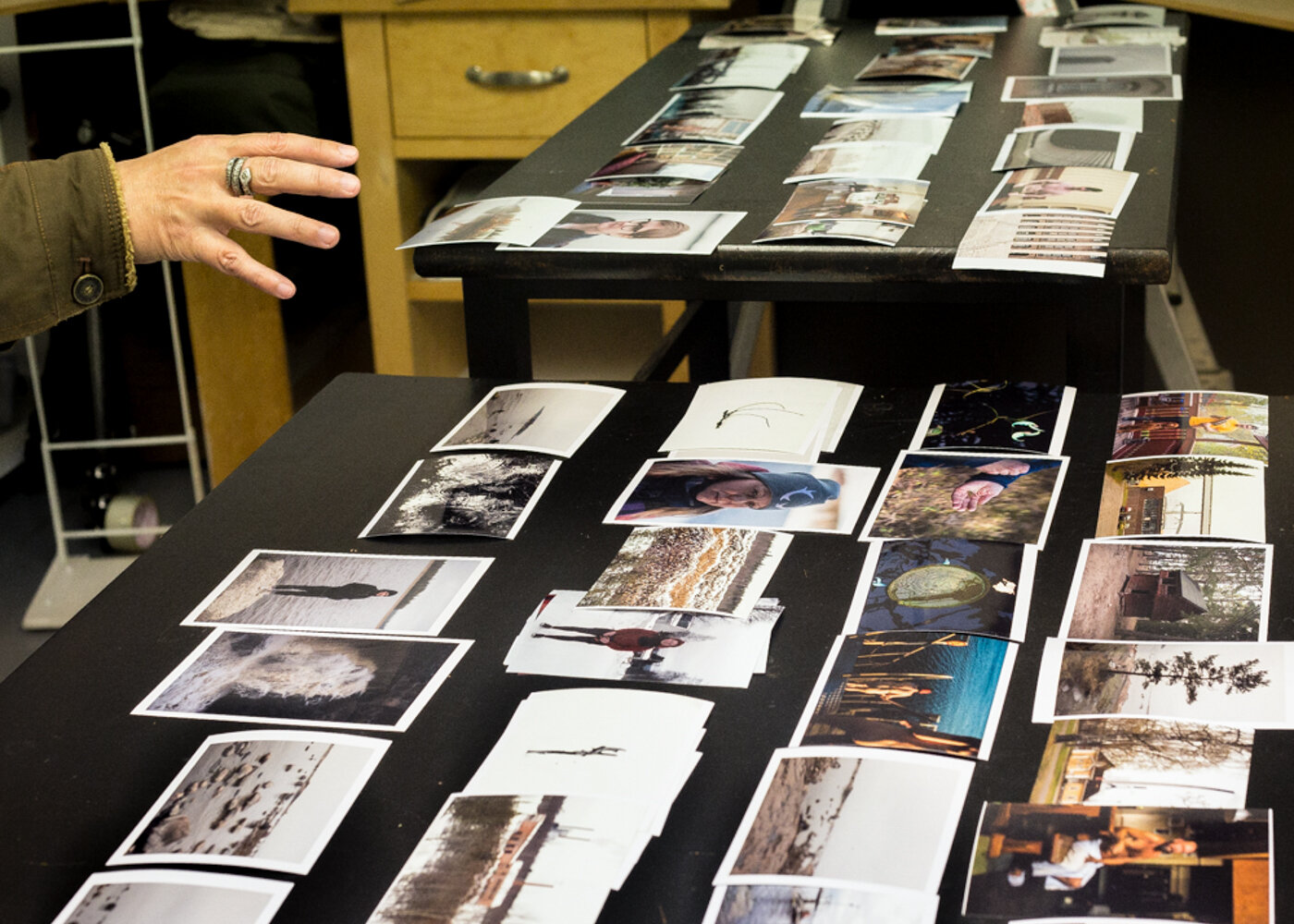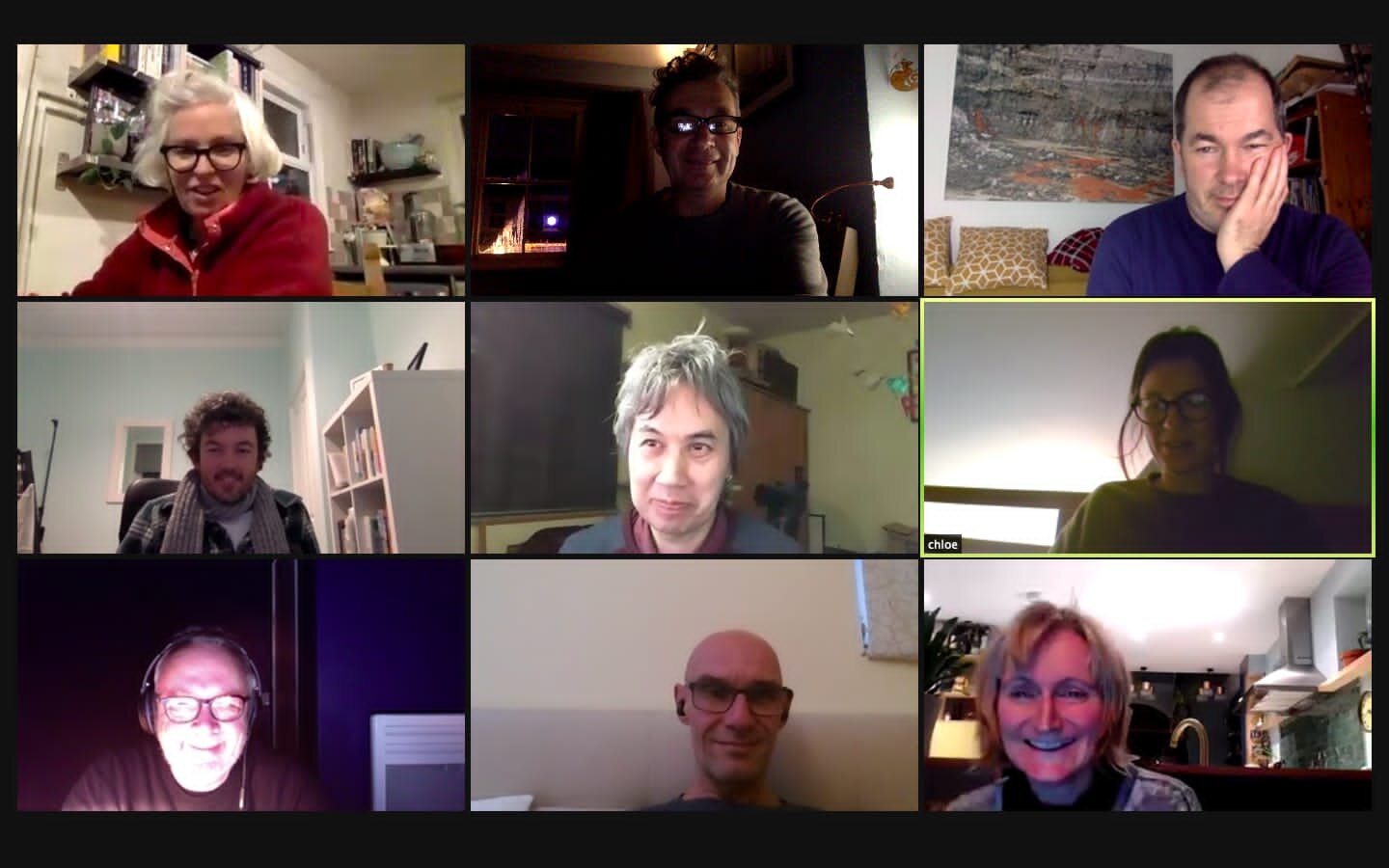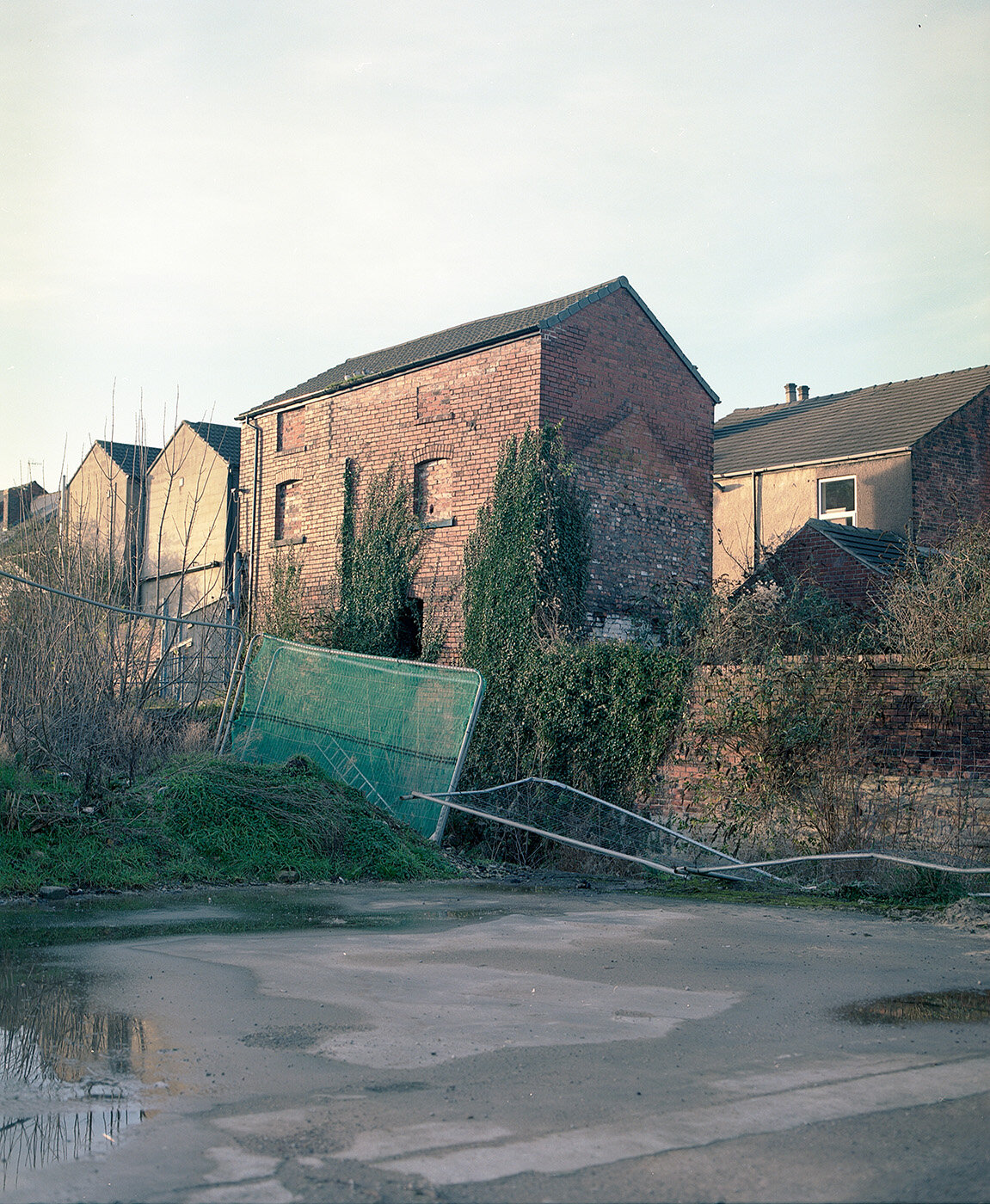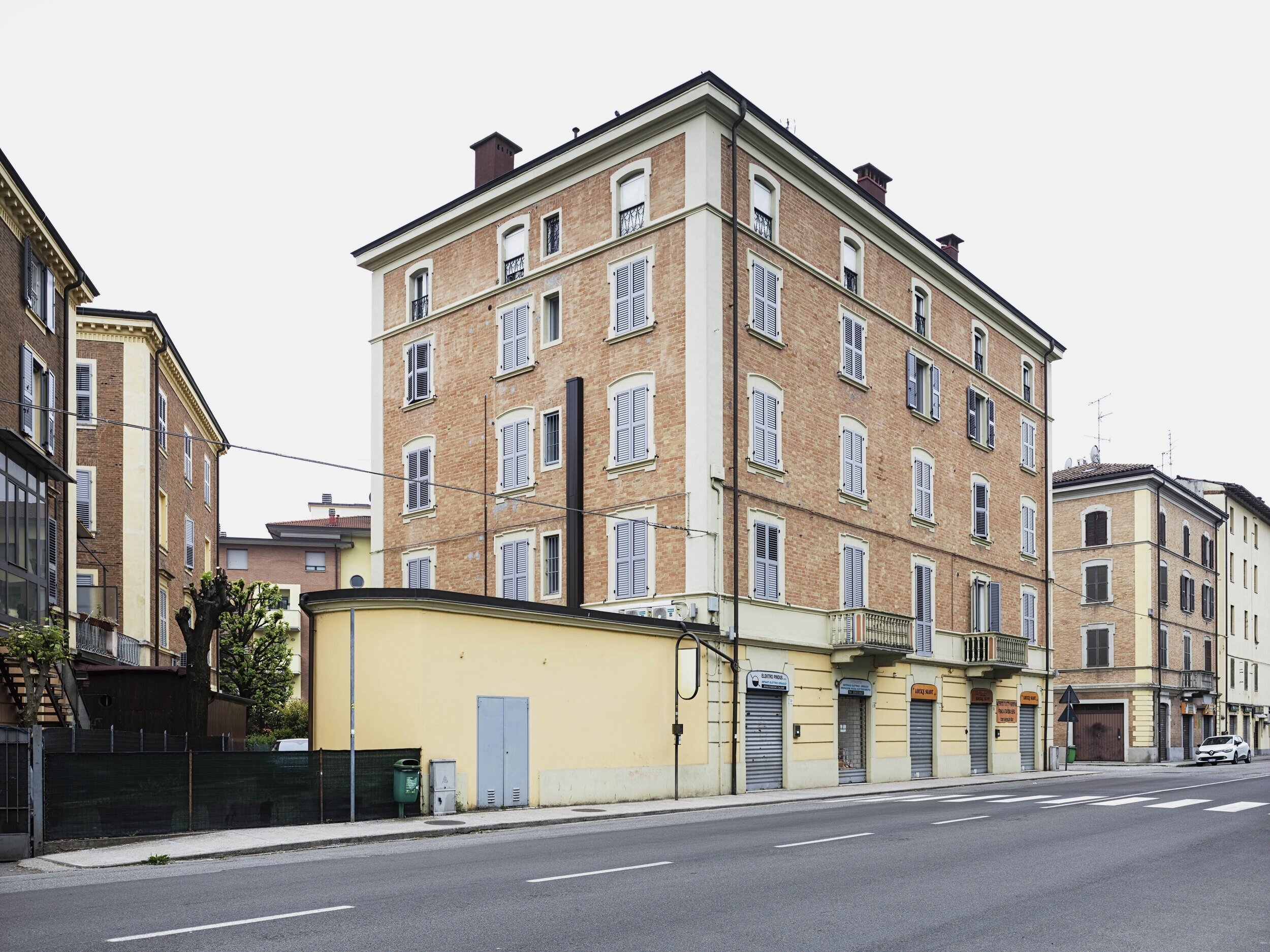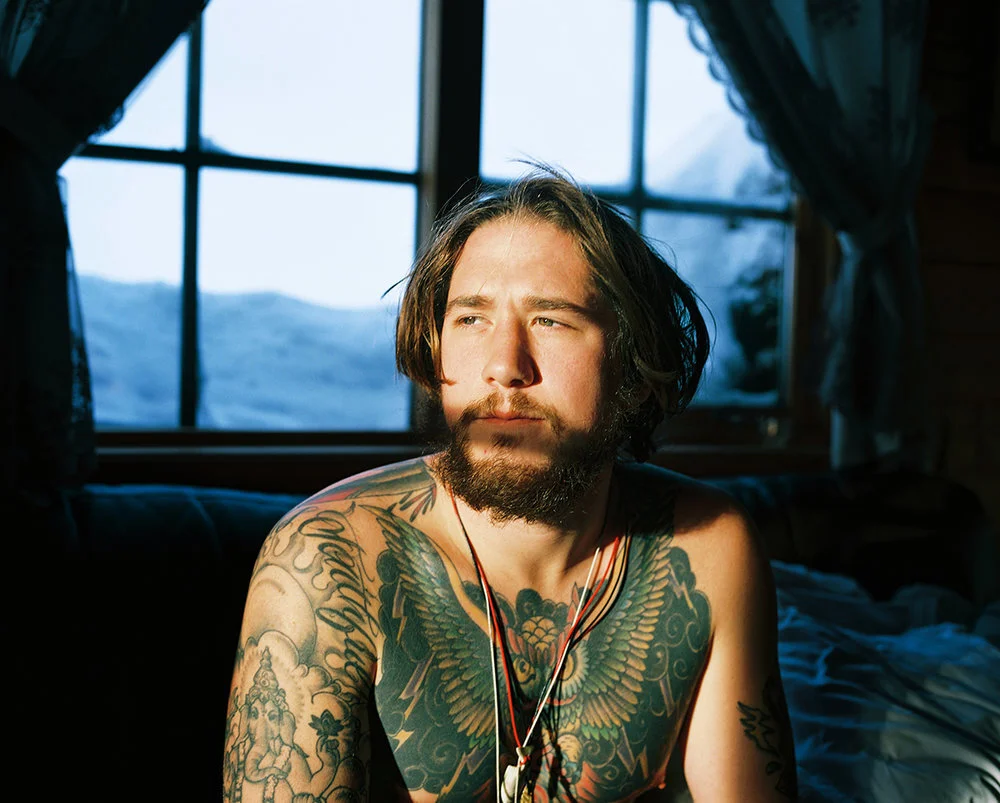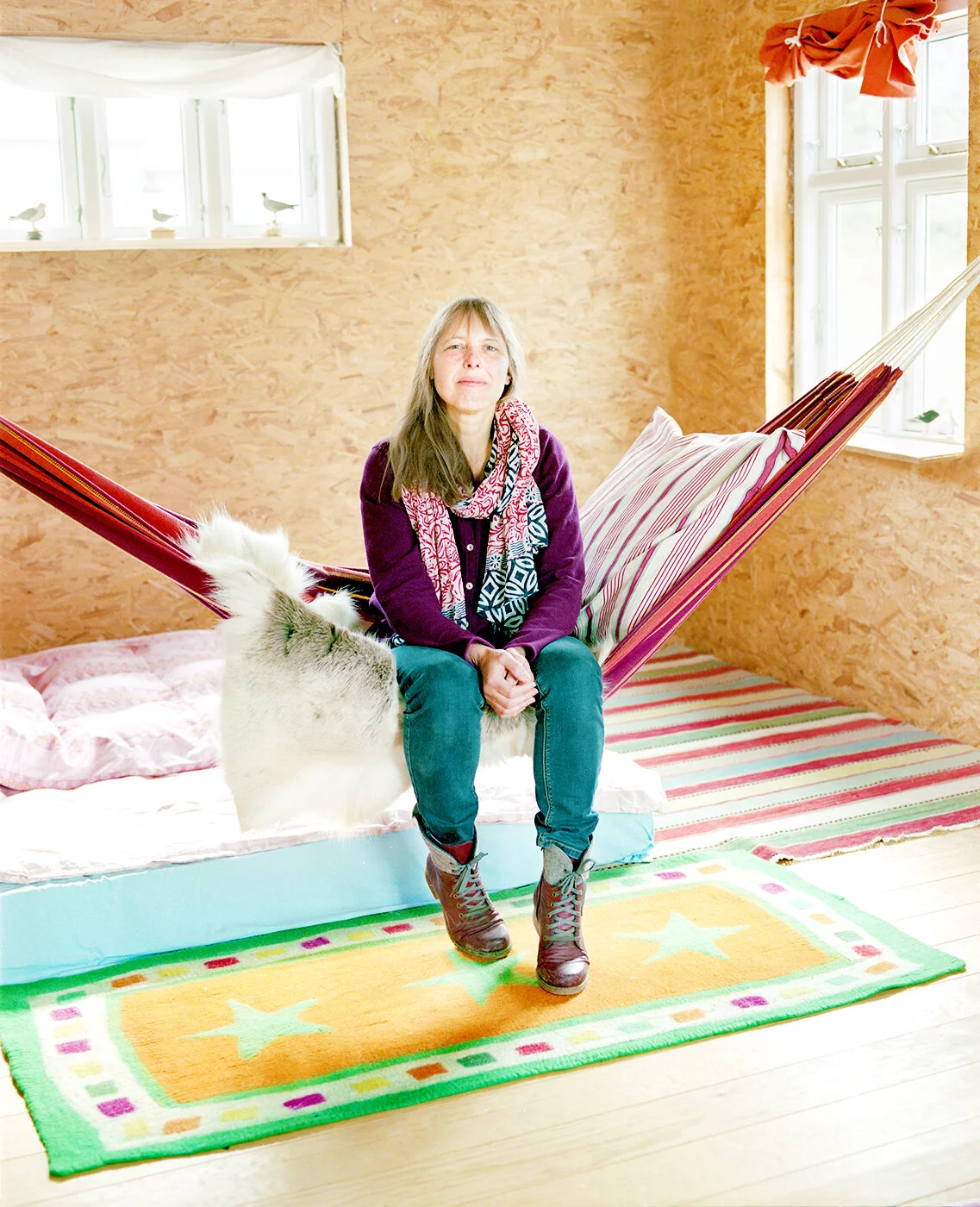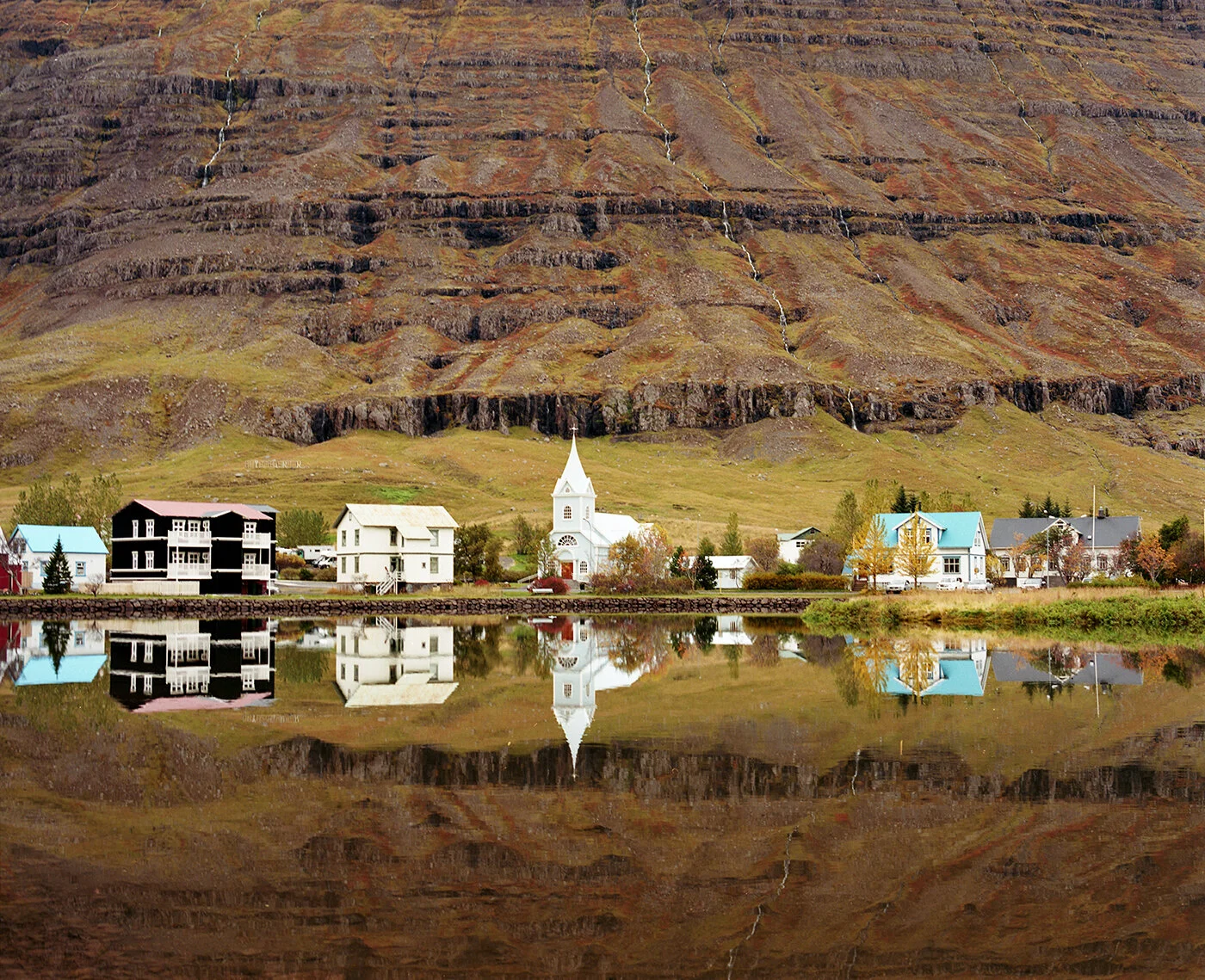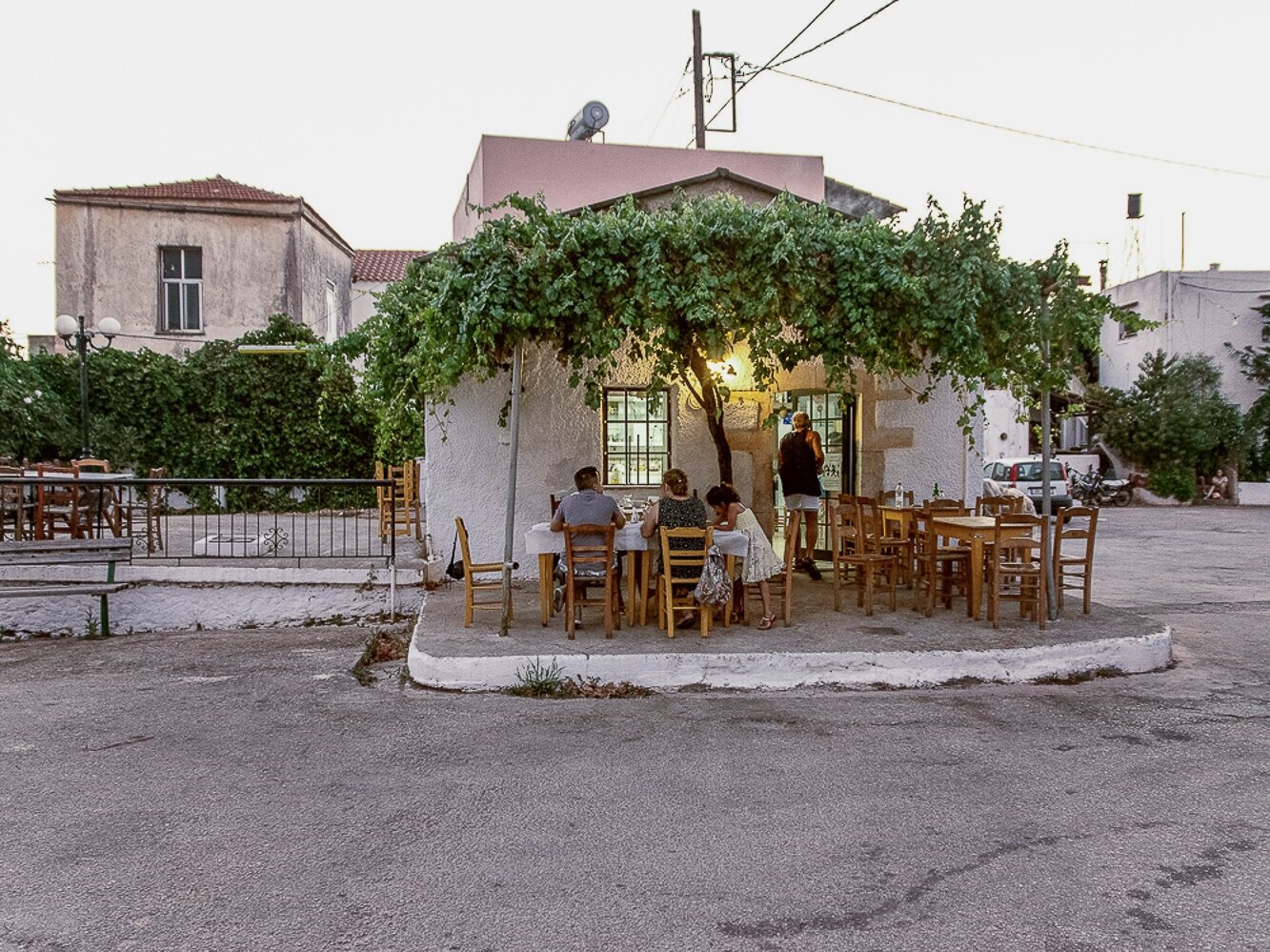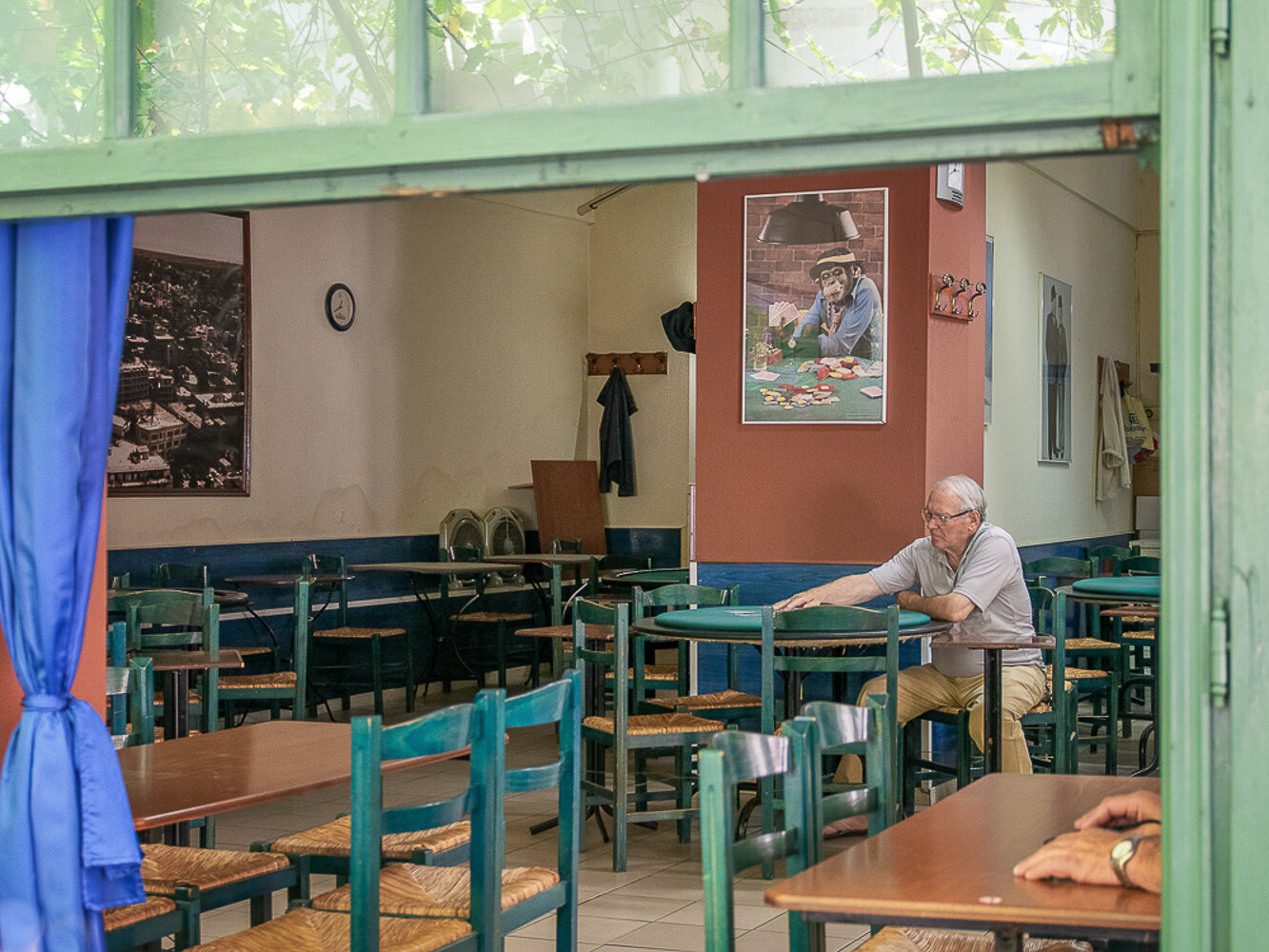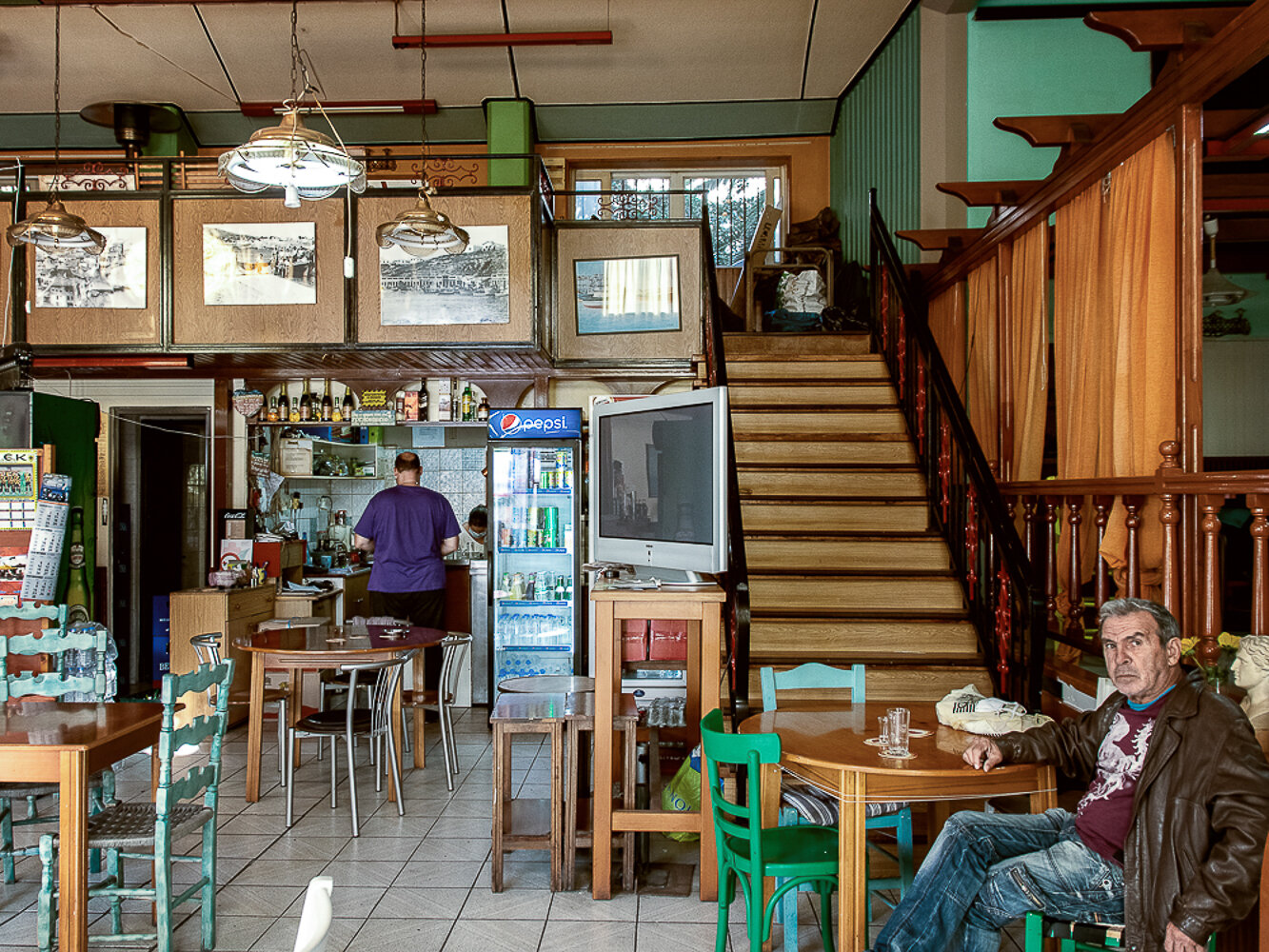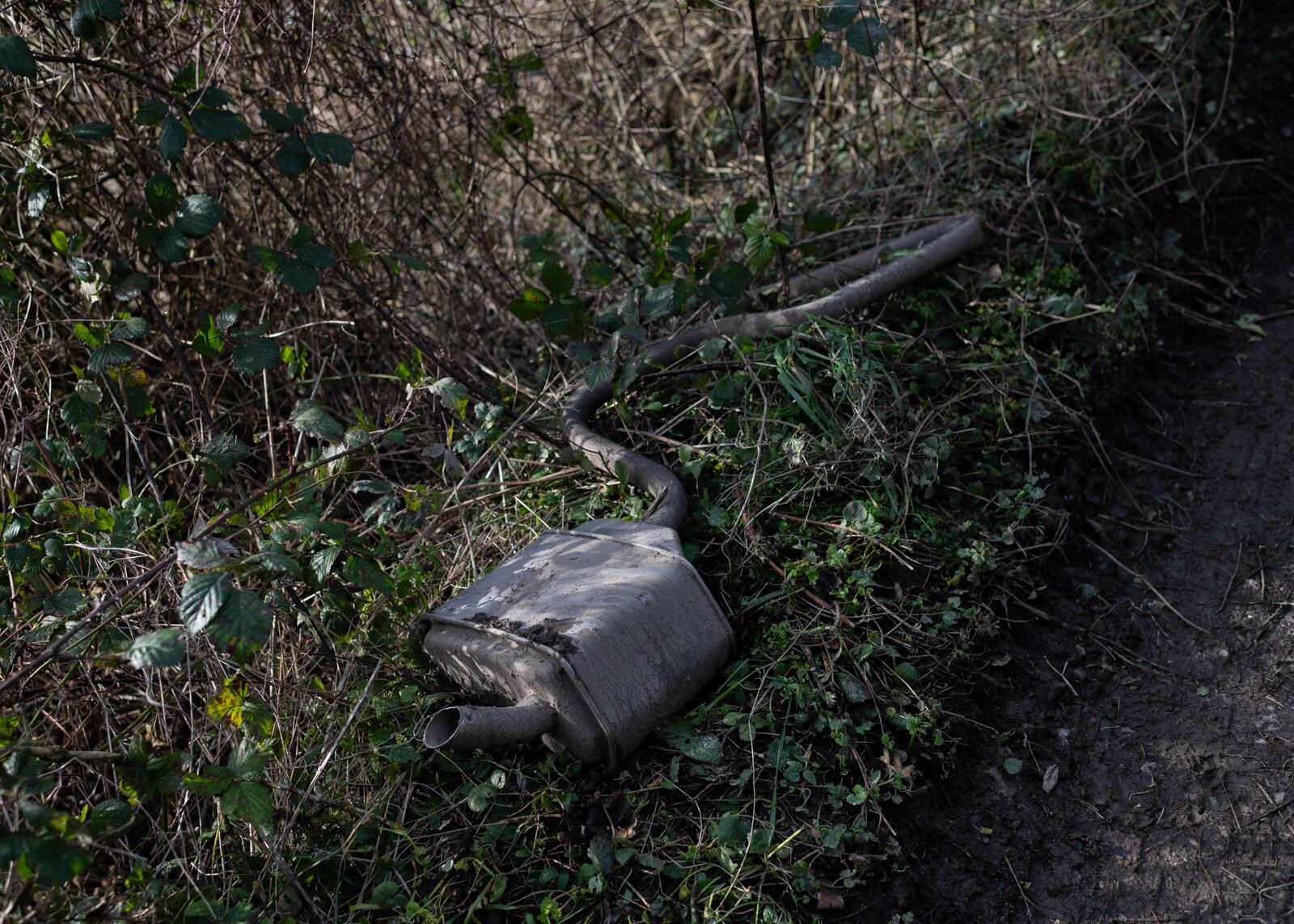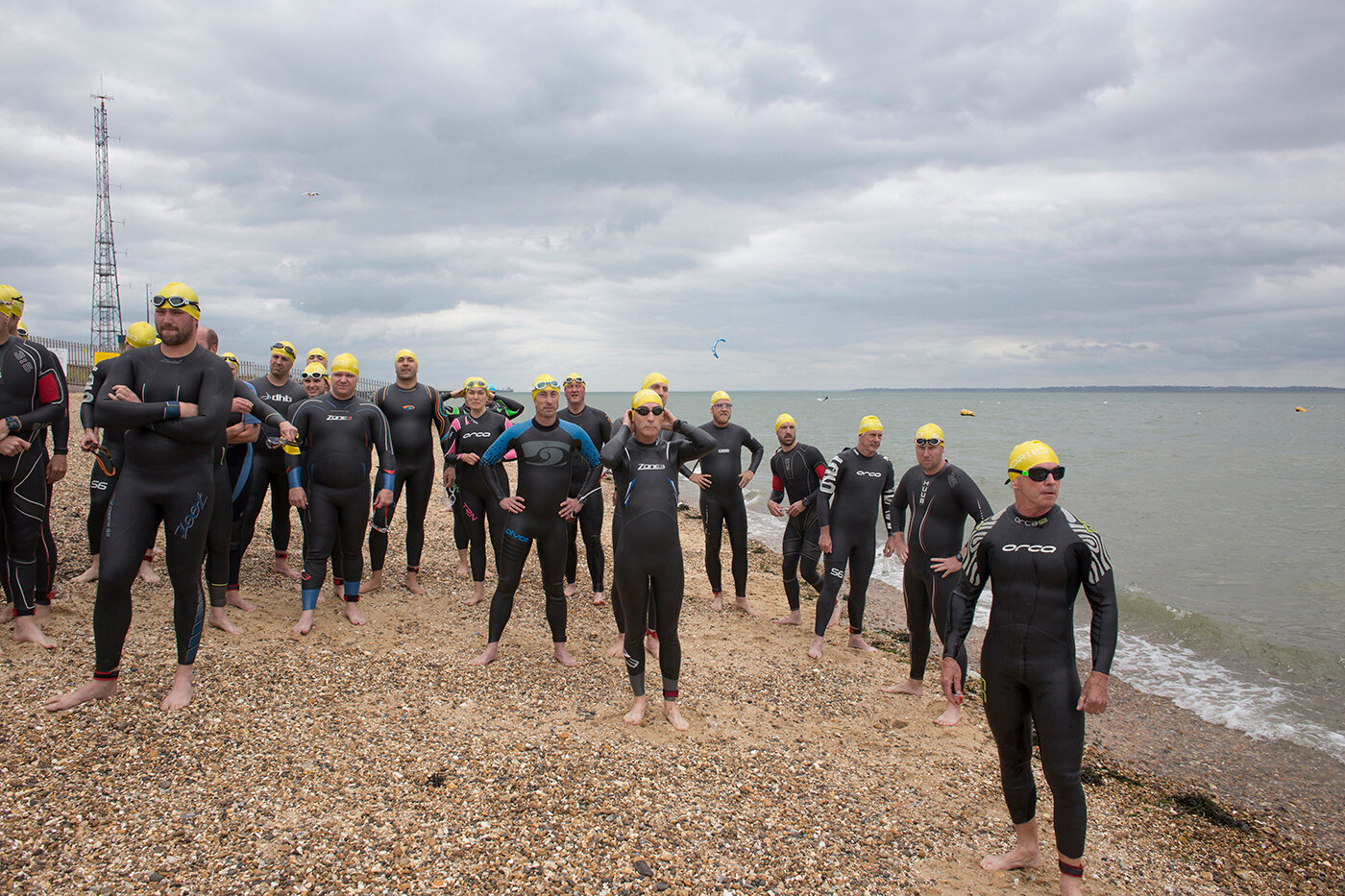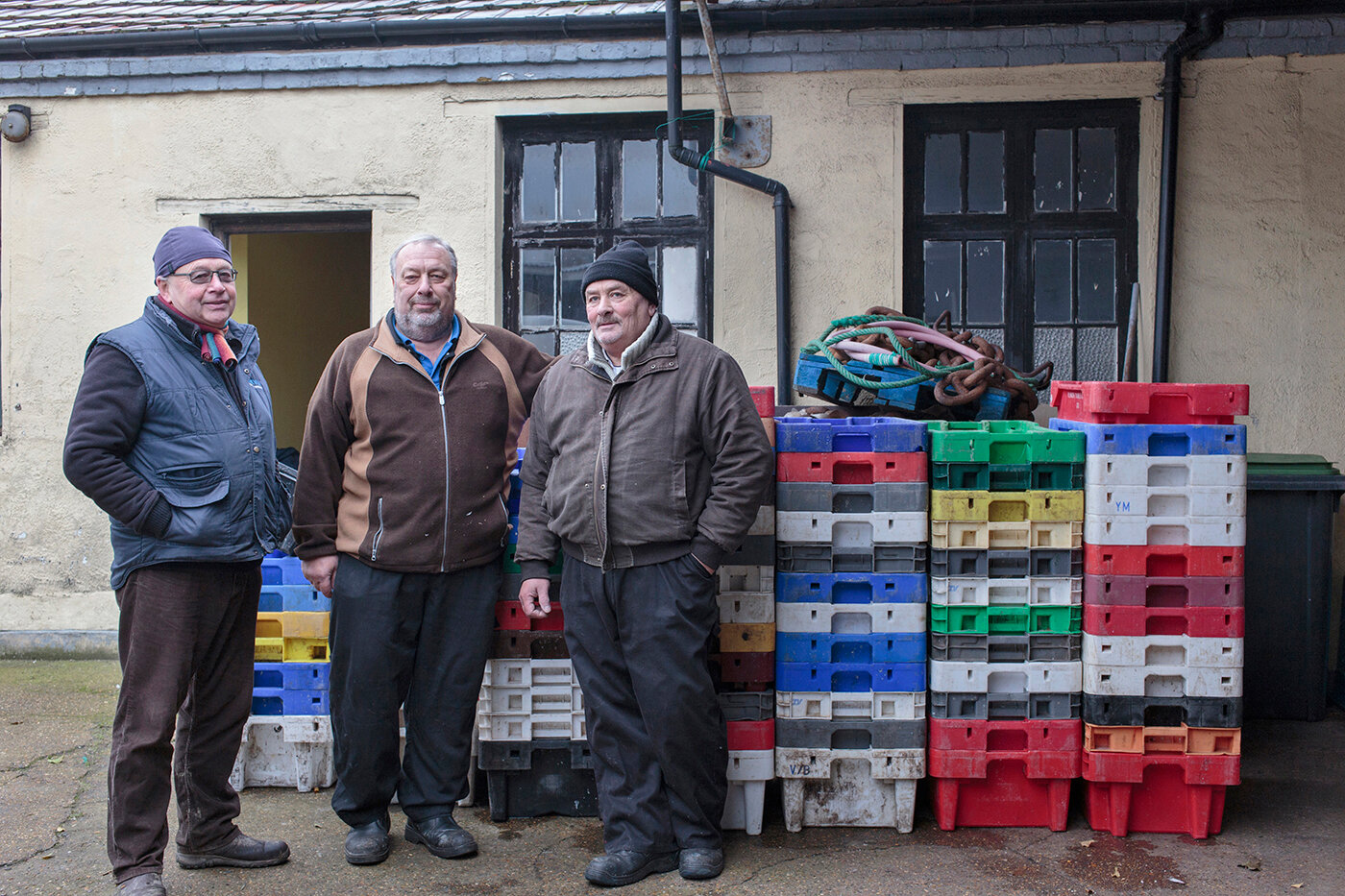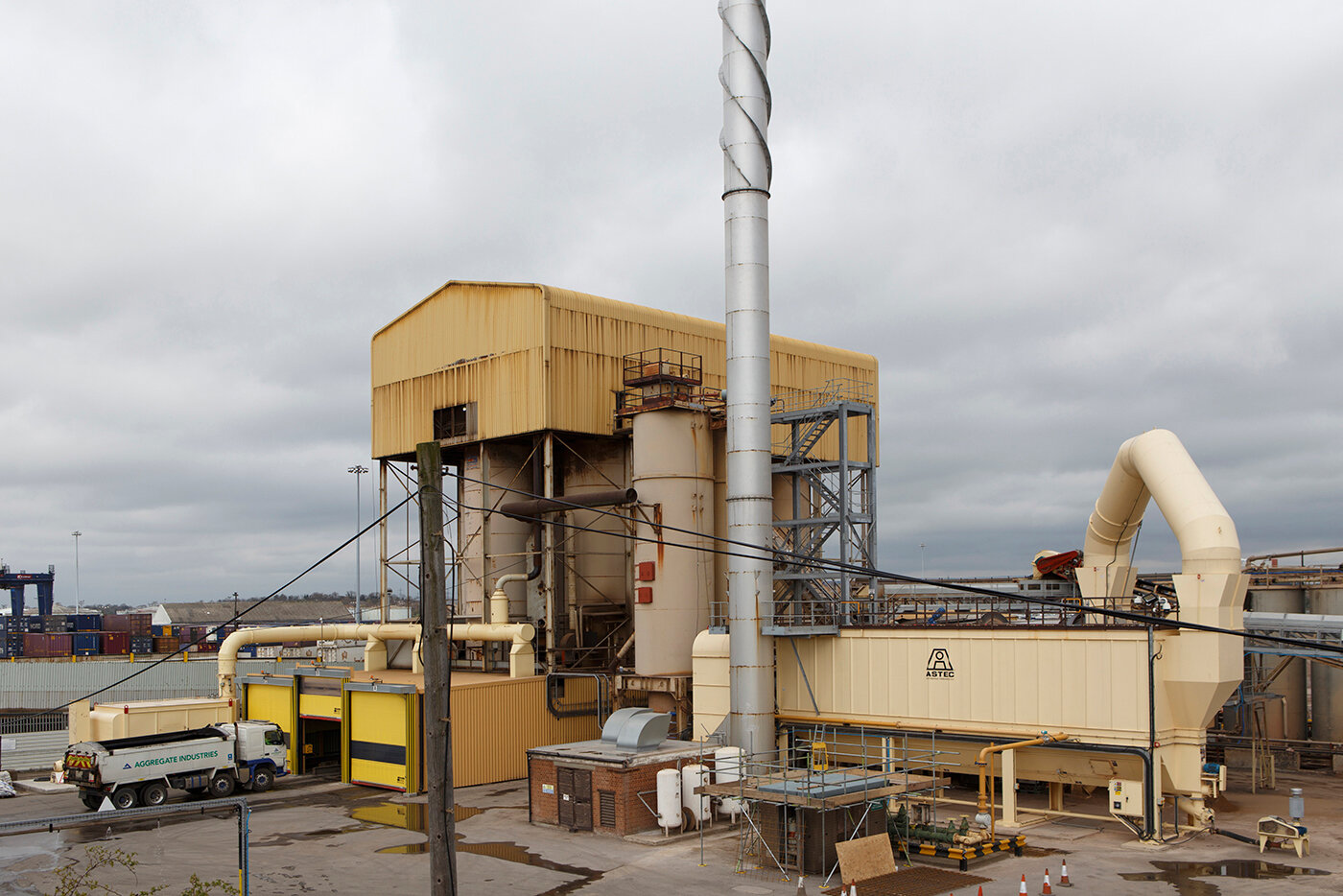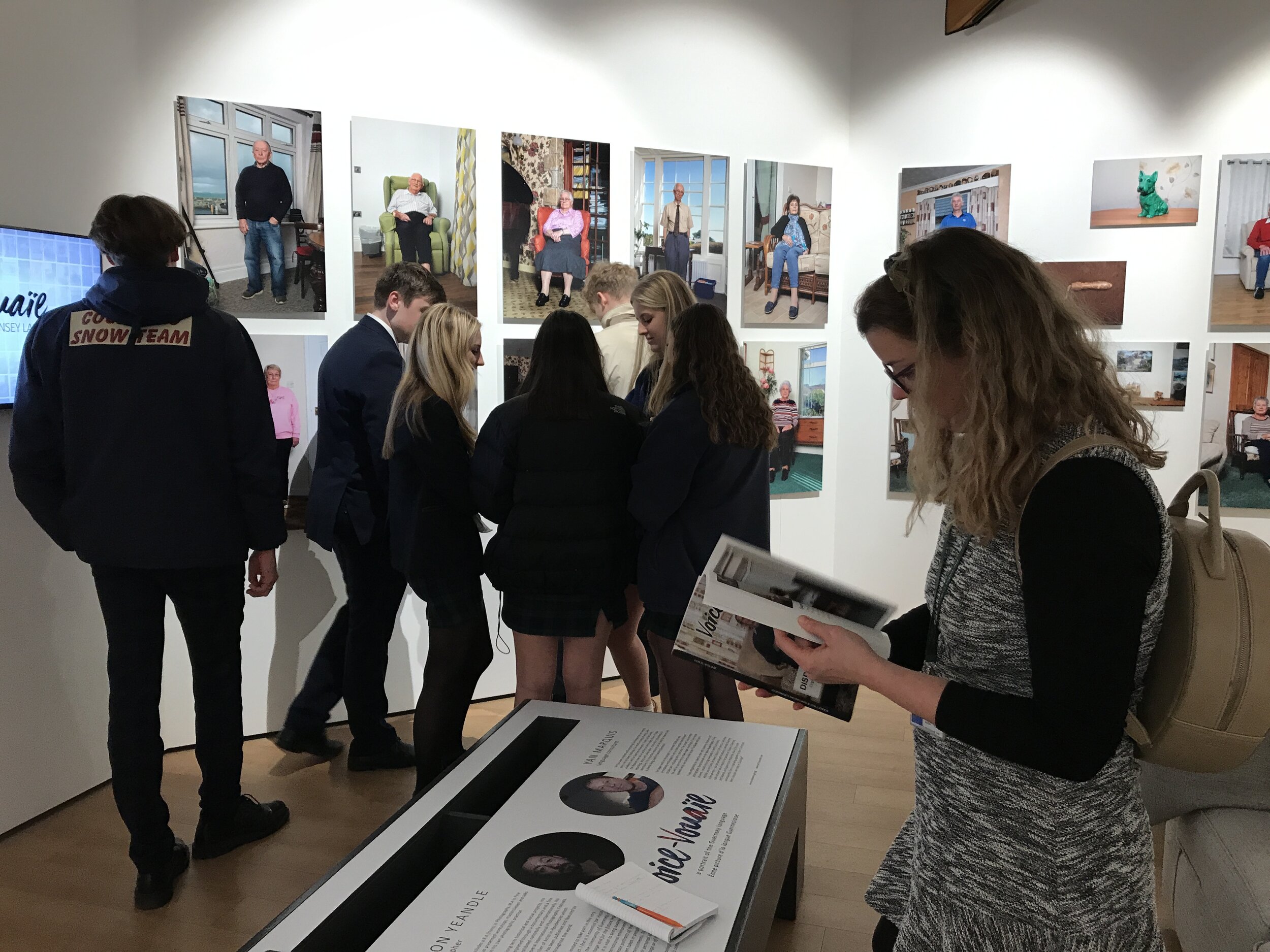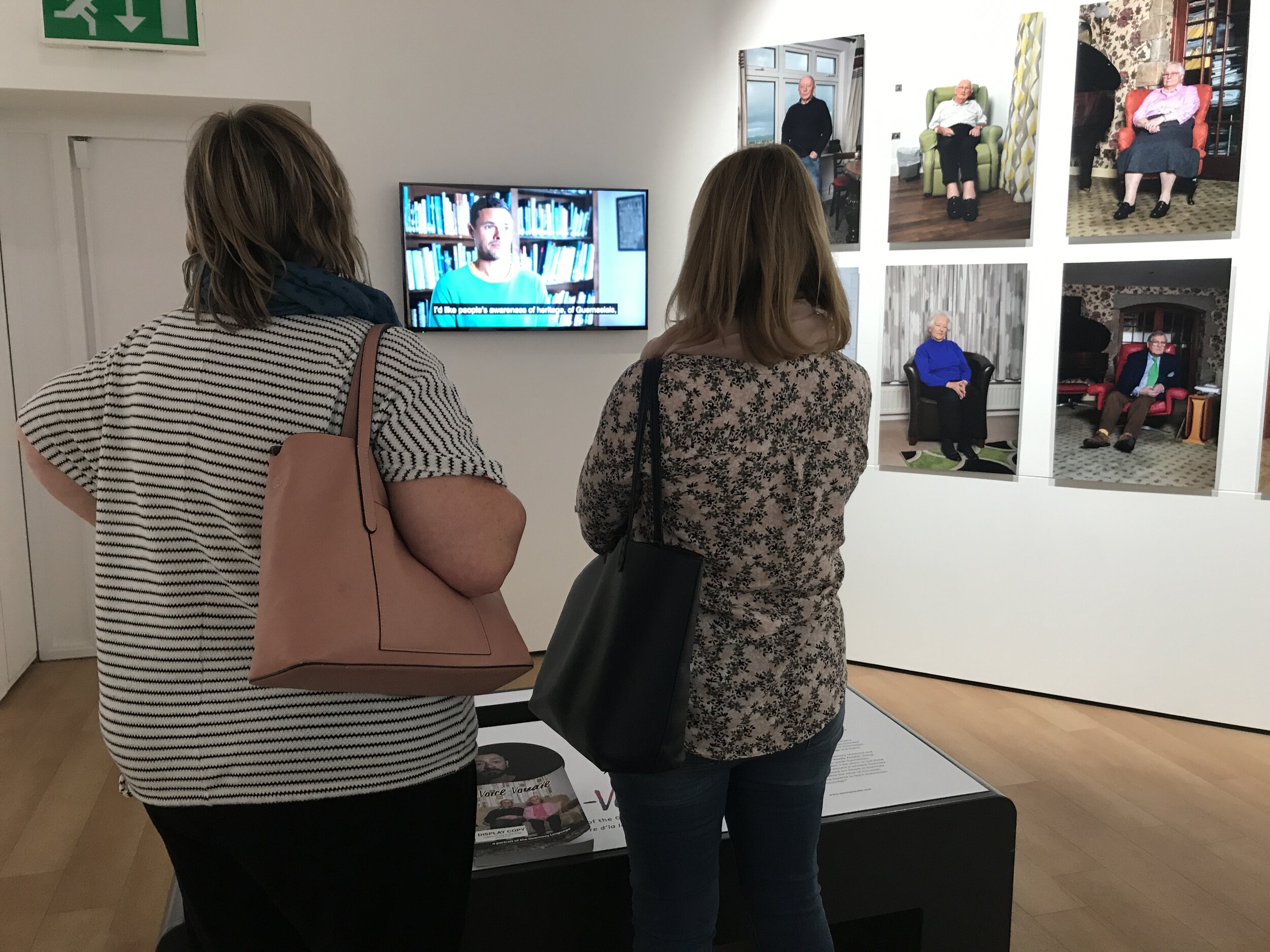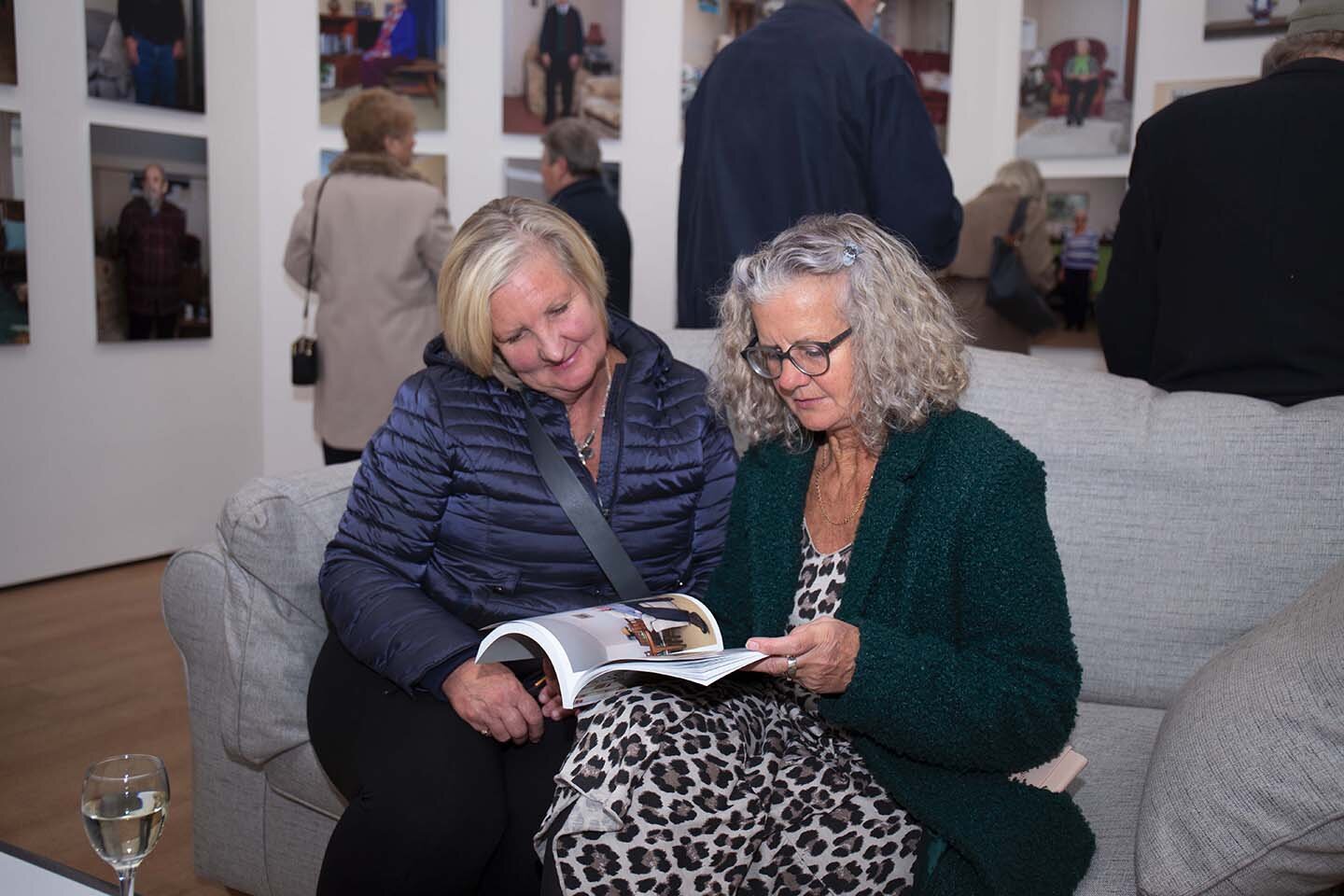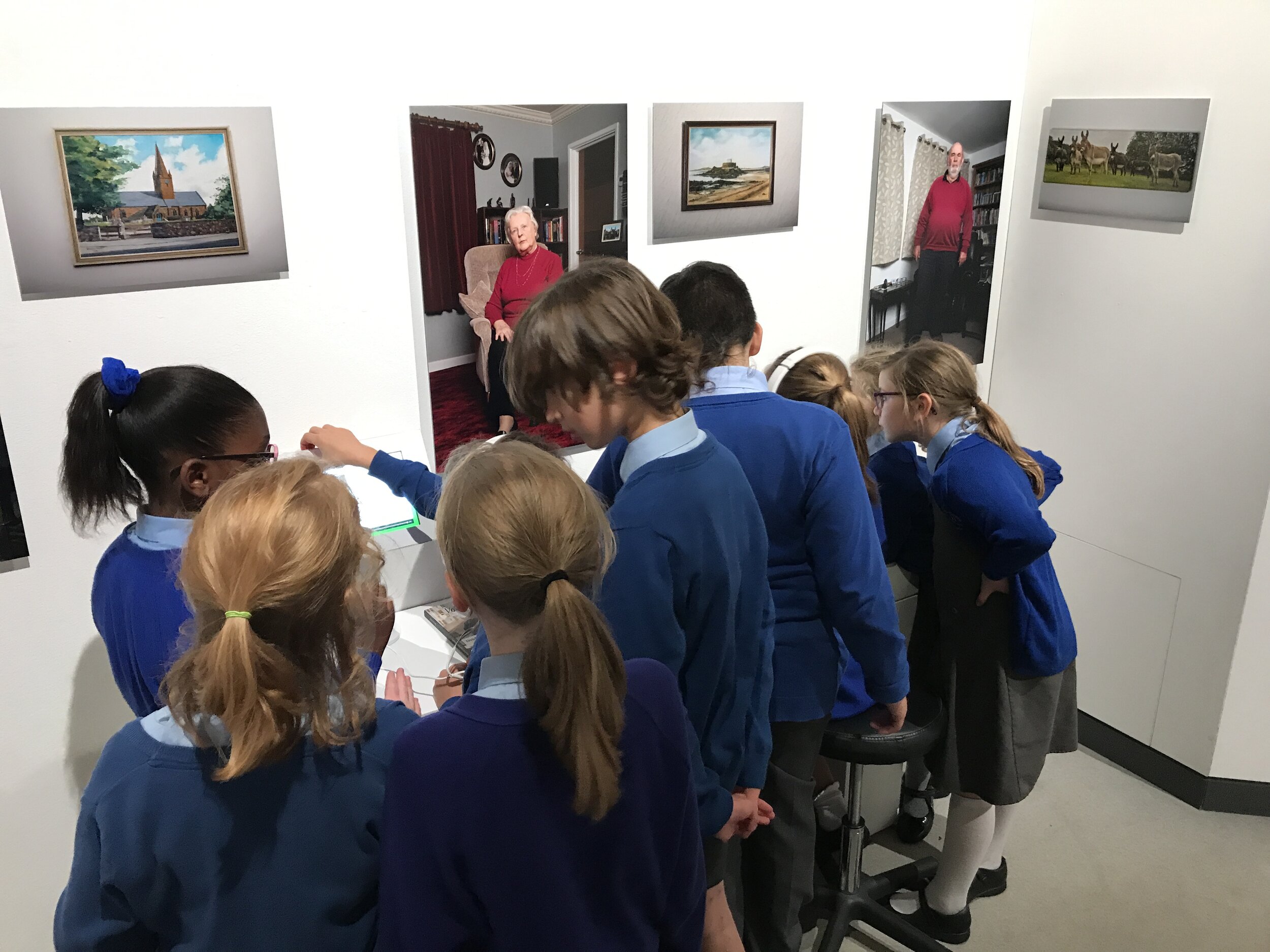Briefly describe the photograph
Pam is central in the image, above and behind her there are three images. On the right is an embroidered young child. In the centre there is an image of a white angel, which is strangely coincidental because Pam always felt there was an angel behind her shoulder watching out for her. On the left there is a verse which says:
‘’They who wait upon the Lord shall renew their strength; they shall mount up with wings as eagles; they shall run, and not be weary; and they shall walk, and not faint’’.
Where was this photograph made?
Les Blancs Bois Housing care complex, which is in Guernsey the Channel Islands.
Why was the photograph made?
This portrait of Pamela Margaret Bourgaize is from the Voice-Vouaie project. The project is a social and historical body of work which captures the last original native speakers of the Guernsey endangered language. The work is comprised off intimate portraits and images of their personal objects. The project was three years in the making and all of the portraits have been taken in people’s homes, showing their private environments.
What was happening outside the frame?
We began by chatting over a cup of tea before I decided on the location where to take Pam’s portrait. After the portrait was taken Pam started to tell me about her life and her religion, and how in many ways it saved her through miracles. Pam’s life story was fascinating and at times sad and distressing but it made this portrait even more poignant.
Tell us a key fact about this photograph.
Pam went to live in Canada in her 20’s and worked as a radiographer and a clinical instructor for eleven years. Then out of nowhere she became extremely ill, suffering from non-stop migraines and uncontrollable vomiting. Pam also started to suffer from amnesia at the same time. After a long period of trying to diagnose what was wrong with her the doctors discovered she was suffering from Spinal Tubercular Meningitis, which is exceptionally rare in the western hemisphere. During this period she had numerous brain operations and almost died on several occasions. Her life was never the same and even to this day Pam still suffers from major health issues. She explained to me, ‘‘The only way I kept going was through Jesus and his miracles and with the power of God. I felt like God and his Angels were over my shoulder watching and protecting me.’’
Why is this photograph important to you?
I took the portrait before she had explained her life and beliefs. The reason why this portrait stands out is because there are many fortuitous conjunctions happening behind the scenes. I could have placed Pam anywhere in the apartment, it was my choice to ask her to stand in that part of her flat with the angel. Furthermore, when I asked Pam for a personal object of hers to photograph, she brought her Bible which was the same colour as her dress that she had not worn for 40 years. When I placed the Bible on the carpet to be photographed I noticed that the carpet, Bible, the chair and Pam’s dress were all shades of the same colour. This is why I love photography, there are so many coincidences that can happen, with or without you knowing about it.















